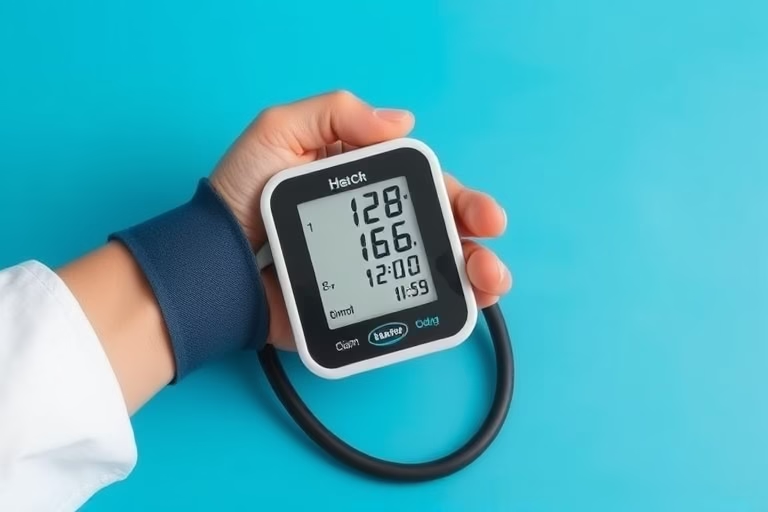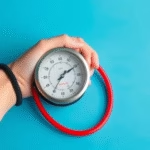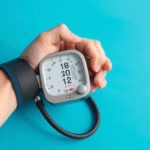In this article, we will be talking about why the first blood pressure reading is always high. Blood pressure is a critical health metric that indicates the force with which blood pushes against the walls of the arteries. Typically, when we think of high blood pressure, or hypertension, we may perceive it as a chronic condition that can lead to severe health complications. However, understanding why the first reading is often higher than subsequent measurements can provide valuable insight into our body’s response to stress, anxiety, and various other factors.
The initial blood pressure reading taken during a medical examination or at home may often yield higher numbers compared to later readings. This phenomenon can be attributed to several physical and psychological factors. First, the body can experience a temporary spike in blood pressure due to situational stress, commonly referred to as “white coat syndrome.” Second, the accuracy of the measuring device, the positioning of the body, and even the time of day can influence the reading. Understanding these aspects is crucial to interpreting blood pressure readings accurately and addressing potential underlying health issues. In this article, we will delve deeper into the many reasons behind why the first blood pressure reading is typically elevated.
Understanding Blood Pressure Readings
Blood pressure readings are expressed in millimeters of mercury (mmHg) and consist of two numbers: systolic and diastolic pressure. The systolic reading, which is the top number, indicates the pressure in the arteries when the heart beats. The diastolic reading, the bottom number, signifies the pressure when the heart is at rest between beats. It is essential to understand that fluctuations in these readings can occur for a variety of reasons.
Different factors like age, weight, physical activity, and medication can impact your blood pressure. Furthermore, the environment in which the measurement is taken can also play a significant role. Observing the variations in these readings is vital for assessing overall cardiovascular health and managing risk factors for heart disease.
White Coat Syndrome
White coat syndrome refers to the phenomenon where patients exhibit elevated blood pressure readings in a clinical setting. This condition occurs due to anxiety triggered by the presence of medical personnel, leading to a temporary increase in heart rate and blood pressure. Many individuals may feel nervous during check-ups, which can affect their readings. Studies suggest that the anxiety associated with medical visits can lead to a significant difference between readings in the doctor’s office and those taken at home. This underscores the need for healthcare providers to recognize this condition and, when necessary, use alternative methods or multiple readings to assess a person’s true blood pressure.
Measurement Technique
The technique used to measure blood pressure is crucial in obtaining accurate readings. If the cuff is too small or too large, or if it is placed incorrectly on the arm, it can result in falsely elevated readings. Healthcare professionals need to ensure the proper cuff size is used and that the patient is relaxed during the process. Additionally, improper positioning can lead to inconsistencies; patients should be seated comfortably with their back supported and feet flat on the floor. Understanding these technical aspects can significantly aid in achieving accurate blood pressure readings.
Body Positioning
The body position during a blood pressure measurement can significantly influence the outcome. For instance, individuals measuring their blood pressure while standing might notice higher readings compared to sitting or lying down. This variance is often due to differences in blood flow dynamics. Ideally, blood pressure should be measured when a person is seated comfortably, providing more reliable results. Body positioning matters in both clinical settings and home measurements, emphasizing the importance of standardizing methods to ensure consistency across readings.
Time of Day
Blood pressure can fluctuate throughout the day, influenced by circadian rhythms and daily activities. Typically, blood pressure tends to be lower during the night and gradually rises in the morning as the body awakens. Factors like physical exertion, meals, and stress levels can further contribute to variations in blood pressure readings. Understanding how these fluctuations occur throughout the day enables healthcare providers to better interpret results and tailor treatments for those with hypertension.
Emotional and Physical Stress
Emotional stress due to work, financial concerns, or personal relationships can elevate blood pressure temporarily. Similarly, physical stress on the body, such as during exercise, can lead to momentary increases in blood pressure readings. It is essential to consider the emotional and physical context when assessing blood pressure, particularly when the first reading is taken. Creating a calm environment before measurements can help reduce the impact of stress, thus providing a clearer picture of an individual’s blood pressure status.
Home Monitoring vs. Clinical Measurements
Home blood pressure monitoring is an effective practice that allows individuals to track their readings outside of a clinical setting. Individuals often report lower blood pressure at home compared to readings taken in a doctor’s office due to diminished anxiety levels. However, this inconsistency emphasizes the importance of understanding the variances between different environments. Regular home monitoring can complement clinical assessments and help manage chronic hypertension effectively.
Blood Pressure during Physical Activity
Engaging in physical activity raises the heart rate and consequently blood pressure. For those participating in vigorous exercise, it is common to see temporary spikes in the readings immediately afterward. However, consistent exercise contributes to long-term reductions in resting blood pressure and overall cardiovascular health. Understanding these patterns is vital when interpreting blood pressure levels before, during, and after physical activity.
Aging and Blood Pressure Changes
Aging is associated with structural changes in blood vessels, leading to increases in both systolic and diastolic blood pressure. As individuals age, their arteries can become stiffer, contributing to a generally higher baseline blood pressure. Increased blood pressure readings can appear more pronounced in initial measurements, providing insight into an individual’s cardiovascular health. Regular monitoring and timely interventions can help manage age-related blood pressure changes effectively.
Impacts of Medication
Certain medications can influence blood pressure readings, acting as diuretics, beta-blockers, or ACE inhibitors. These medications can either raise or lower readings depending on their mechanism of action. People taking antihypertensives may observe fluctuations in their blood pressure readings at different times, particularly at the start of therapy or when making dosage adjustments. Consultation with a healthcare provider is essential to tailor treatment plans and optimize blood pressure control.
Conclusion
In summary, understanding why the first blood pressure reading is often elevated can provide valuable insights into the complexities of cardiovascular health. Factors such as white coat syndrome, measurement techniques, body positioning, time of day, stress levels, and medication all contribute to variations in blood pressure readings. By being aware of these influences, individuals can better interpret their measurements and discuss them effectively with healthcare providers.
Regular monitoring of blood pressure is essential for managing overall health, particularly for those with risk factors for hypertension. Implementing strategies to reduce anxiety during readings and ensuring accurate measurement techniques can improve the reliability of results. Awareness of the day’s variations and the influence of physical activity on readings emphasizes that blood pressure is not a static number, but rather a dynamic indicator of health.
Ultimately, proactive efforts in managing both emotional and physical health, coupled with misunderstandings surrounding blood pressure, can lead to healthier outcomes and improved quality of life. It is vital to establish a dialogue with healthcare professionals, utilize home monitoring approaches, and adopt lifestyle changes that support cardiovascular well-being.
Frequently Asked Questions
- What causes high blood pressure readings? High blood pressure readings can be caused by a variety of factors, including stress, anxiety, poor measurement techniques, and health conditions.
- How can I lower my blood pressure immediately? Relaxation techniques such as deep breathing can help lower blood pressure temporarily. Regular exercise and a balanced diet are essential for long-term management.
- Is it normal for blood pressure to fluctuate? Yes, it is completely normal for blood pressure to fluctuate due to factors such as activity level, time of day, and stress.
- What is considered a healthy blood pressure reading? A normal blood pressure reading is typically around 120/80 mmHg. Readings above 130/80 mmHg may indicate hypertension.
- Should I take multiple blood pressure readings? Yes, taking multiple readings and averaging them can provide a more accurate representation of your blood pressure.
Further Reading
What Type of Psychotherapy Is Best for Anxiety?







